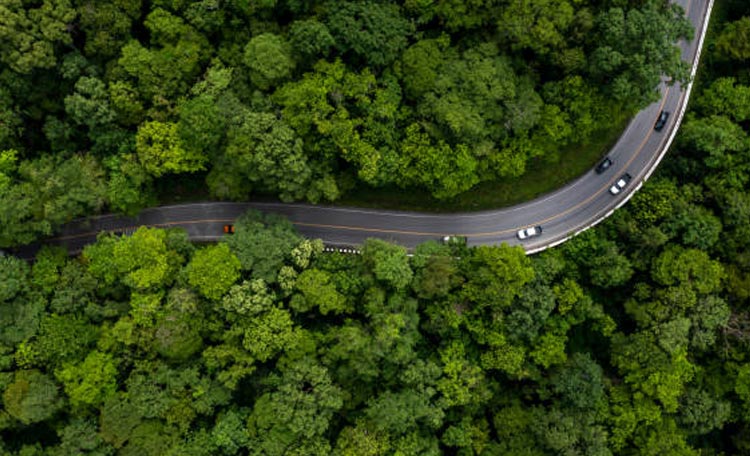The new U.S. tariff policy, taking effect on August 1, 2025, has resulted in companies across Asia to undergo significant strategic transformations. Amid escalating trade tensions, Vietnam is rapidly emerging as a key hub for businesses seeking to mitigate tariff risks and improve operational efficiency.
Initially, Vietnam faced uncertainty as early drafts proposed tariffs of up to 46% on exports. Had that scenario materialized, cost pressures would have compelled many corporations to overhaul their entire business plans. However, after negotiations, the final rate was revised down to 20%. While still higher than previous levels, this figure is now seen as manageable and has helped restore investor confidence. From that turning point, capital began to flow back, and Vietnam quickly became one of the most talked-about names on the regional stage.
The diversification of production away from China is not a new story. For over a decade, the “China Plus One” strategy has guided boardroom decisions as companies sought to reduce reliance on the world’s factory floor. Rising wages, stricter environmental regulations, and escalating trade tensions had already pushed manufacturers to explore alternatives. But the latest U.S. tariffs have served as a catalyst, accelerating a trend that had been gradually unfolding.
Across Southeast Asia, governments are racing to seize this moment, pouring resources into infrastructure upgrades and regulatory reforms. Thailand and Malaysia have invested heavily in industrial parks, while Indonesia is touting its demographic dividend. Yet, Vietnam maintains a unique edge: labor costs remain significantly lower than in Thailand or Malaysia; production and logistics expenses are highly competitive; and its geographic position — bordering China and sitting astride major shipping routes — offers unmatched convenience. Crucially, Vietnam also provides a relatively stable political and policy environment, a factor that foreign investors now weigh more heavily than ever.
“Crucially, the shift is no longer confined to final assembly,” said Trang Bui, CEO of Cushman & Wakefield Vietnam. “Companies are now considering relocating entire supply chains to Vietnam in order to take advantage of policy stability, especially around re-export taxation. This has created enormous momentum for the premium ready-built factory segment, which is becoming a strategic product within Vietnam’s industrial real estate portfolio.”
The surge of interest in Vietnam has placed ready-built factories (RBFs) in the spotlight. Once considered a weak link in the country’s industrial landscape, RBFs have rapidly evolved to meet international standards. Today, they offer standardized technical specifications that suit a wide range of light to medium industries, a far cry from the patchwork facilities of the past.
According to Cushman & Wakefield, Vietnam’s supply of RBFs has grown exponentially since the first major complexes were developed in 2017. By the second quarter of 2025, total supply had reached roughly 11 million square meters, with an average occupancy rate exceeding 85%. Ho Chi Minh City (3 million sqm), Dong Nai (2.2 million), Bac Ninh (1.6 million), and Hai Phong (2.2 million) have emerged as leading clusters, forming industrial corridors that are magnets for foreign investors.Existing RBF Supply, Q2 2025
Source: Cushman & Wakefield
Most factories are built with prefabricated steel structures, corrosion-resistant coatings, and insulated roofing to withstand natural disasters. Ceiling heights range from 4 to 13 meters, allowing for large equipment installation and natural ventilation. Floor loading capacities between 1,000 and 4,000 kg/m² are sufficient to accommodate a wide spectrum of industrial machinery.
Equally important, these facilities now comply with national standards for electricity supply (TCVN 9207:2012), industrial lighting (TCVN 7114:2008), and fire safety (QCVN 06:2022/BXD). Lighting systems deliver between 100 and 750 lux depending on operational zones, while flexible ventilation setups combine negative pressure fans with natural airflow — crucial for maintaining indoor air quality in large plants.
“With these specifications, Vietnam’s ready-built factories can now support the vast majority of industrial production needs,” Trang Bui added. “From electronics components and semiconductors to industrial automation equipment, the fundamentals are in place. For specialized industries requiring cleanroom environments or heavy-duty foundations, most developers now have the flexibility to customize on short timelines.”
Among the new generation of projects, KTG Industrial’s development in VSIP Bac Ninh 2 stands out as a showcase of Vietnam’s ambitions. Covering 14 hectares, the first phase includes seven factories with more than 44,000 square meters of floor space. The centerpiece is floor flatness and levelness, built in compliance with ACI 117-10 standards, designed for precision machinery installation while reducing vibration — a critical feature for high-tech and automated production lines.
The facilities also offer scalable power infrastructure, from 100 to 200 W/m², and advanced insulation systems. Energy efficiency measures are embedded throughout: LED lighting, water-saving fixtures, and insulation upgrades that together are projected to save tenants between USD 75,000 and 80,000 annually in utilities.
The design is future-proofed as well. Roofs are prepped for solar panels, parking lots are EV-ready, and an integrated Energy Management System (EMS) tracks energy use and carbon emissions in real time, offering predictive alerts and optimization recommendations.
The rise of “green factories” is no longer a niche trend — it has become a mainstream requirement. At many industrial parks, low-carbon materials, solar installations, water recycling, and natural lighting are standard features.
Developers are also rethinking worker well-being. Ventilation systems that combine mechanical and natural airflow, built to ASHRAE standards, ensure fresh air and low noise levels. Skylights and translucent roof panels maximize daylight exposure, shown to boost both physical and mental health. Covered motorbike parking provides 12–13 spaces per 1,000 sqm of floor area, ensuring smooth daily operations. Smoke-free policies and designated green zones further enhance the quality of life on-site.
“Our goal is to go beyond simply delivering industrial space. We want to create a facility that supports productivity, safeguards the environment, and elevates the quality of life for every worker on site,” said Mr. Tran Quang Trung, Head of Project Development at KTG Industrial.
Source: Perspective photo of the KTG Industrial VSIP Bac Ninh 2 project
Comparisons with regional peers underscore Vietnam’s competitive edge. China, while still the “world’s factory,” is grappling with rising labor costs and trade friction with the U.S. Thailand has mature infrastructure but high rents and limited supply. Malaysia allows foreign ownership of industrial assets but faces escalating rents in prime zones. Indonesia offers scale but uneven infrastructure, while Singapore caters to high-tech manufacturing with some of the region’s most expensive rents.
Many analysts argue that Vietnam is retracing China’s path of the early 2000s: low costs, abundant labor, and surging FDI inflows. With the right strategies, Vietnam could climb the value chain—from consumer goods production to high-tech sectors such as semiconductors, precision electronics, and automation.
The outlook over the next five to ten years appears highly promising. On one hand, FDI policies are becoming more liberal, supported by commitments to expand transport, ports, and energy infrastructure. On the other, the rise of internationally certified green factories positions Vietnam to meet the growing ESG requirements of global corporations. Challenges remain, from shortages of skilled technical labor to land constraints and intensifying ASEAN competition, but government reforms in vocational training, administrative streamlining, and incentives for high-tech industries suggest strong momentum.
In many ways, the new U.S. tariffs have inadvertently become a catalyst for global supply chain restructuring. And Vietnam, with its blend of cost advantages, geographic positioning, and policy stability, is emerging as one of the biggest beneficiaries, well on its way to becoming Asia’s next strategic manufacturing powerhouse.
*Ready-Built Factory (RBF) is a type of industrial real estate consisting of factories that have been pre-designed and constructed according to specific technical standards. These facilities typically offer flexible floor areas and are available for immediate lease, enabling businesses to save time and initial investment costs while enabling faster production starts.




